Harpers Ferry Historic District: Clay & York Streets
Introduction
Text-to-speech Audio
Structures included in the Harpers Ferry Historic District are: 300 Clay Street, 371 Clay Street, 381 Clay Street, 391 Clay Street, 401 Clay Street, 395 York Street, and York Street (Harper Cemetery).
Images
300 Clay Street (#11)
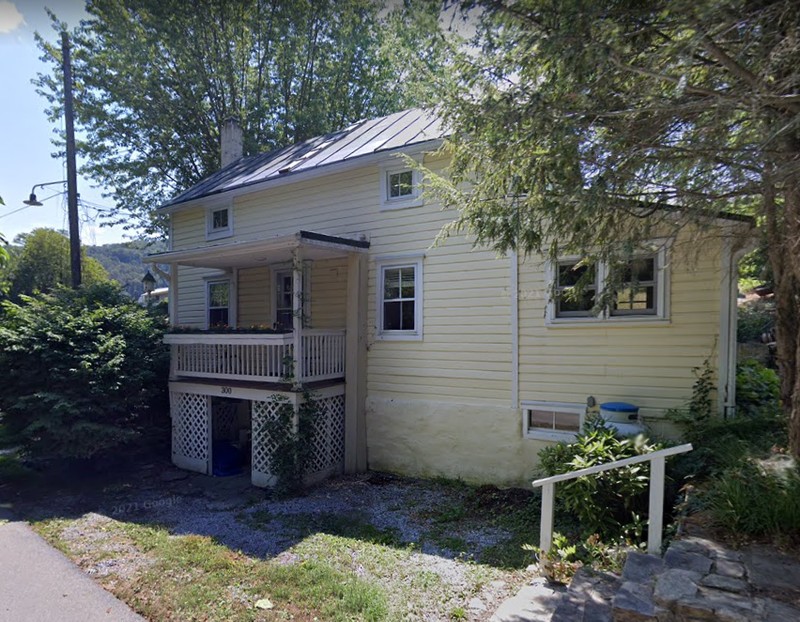
371 Clay Street (#12)
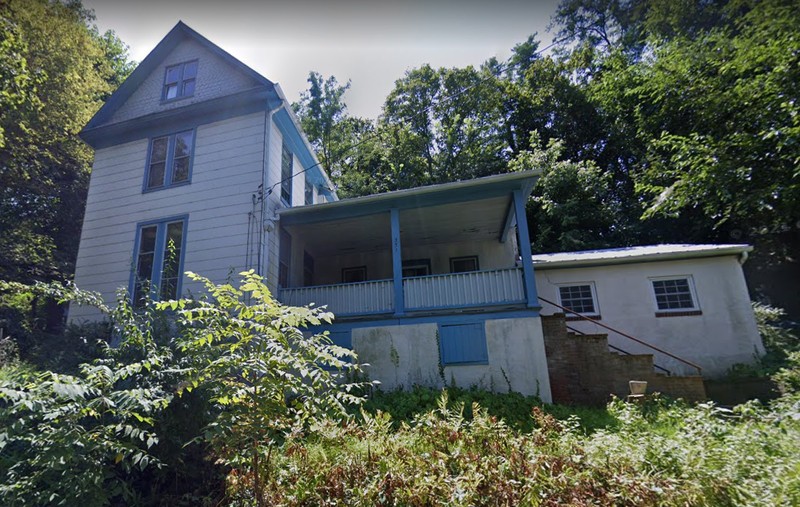
381 Clay Street (#13)

391 Clay Street (#14)
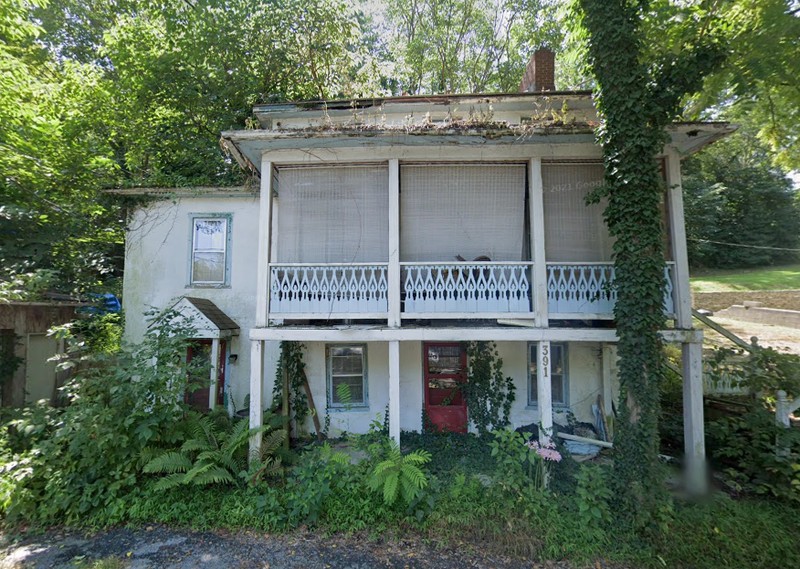
401 Clay Street (#15)
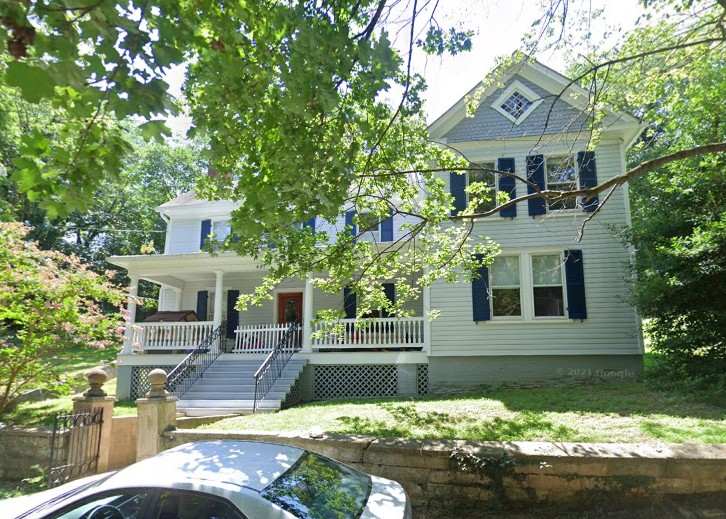
395 York Street (#215)
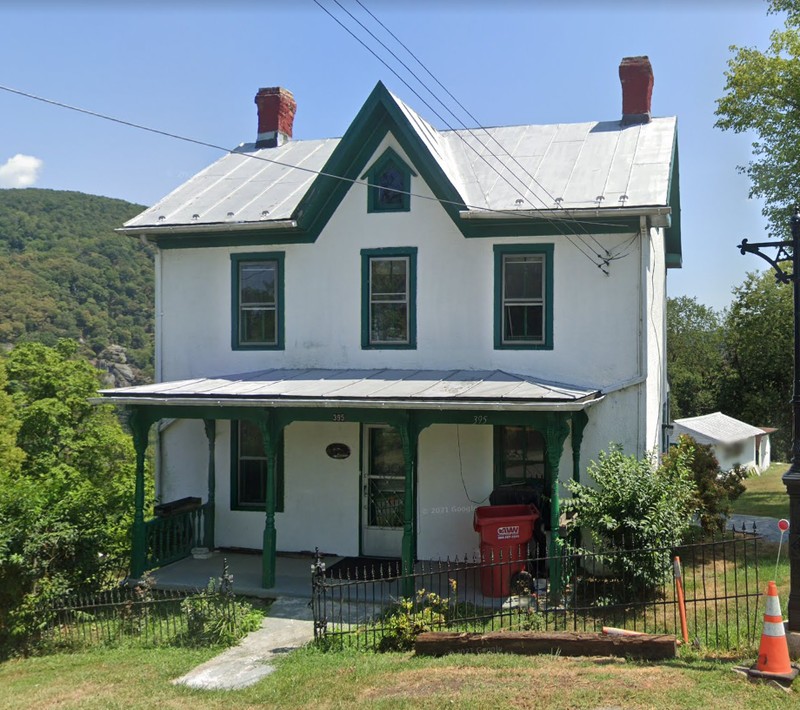
Harper Cemetery (#216)
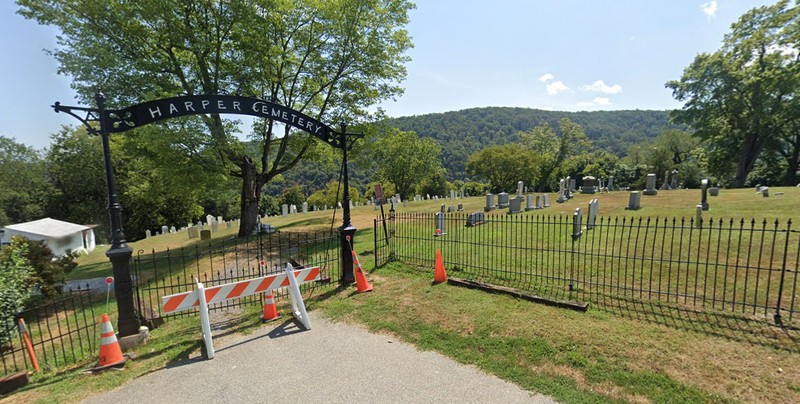
Plot map from 1979 National Register Nomination
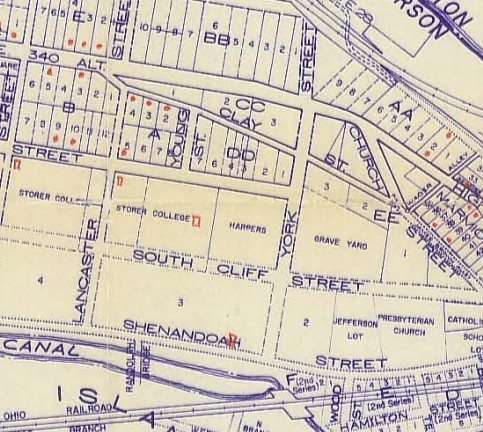
Plot map from 2009 Additional Documentation
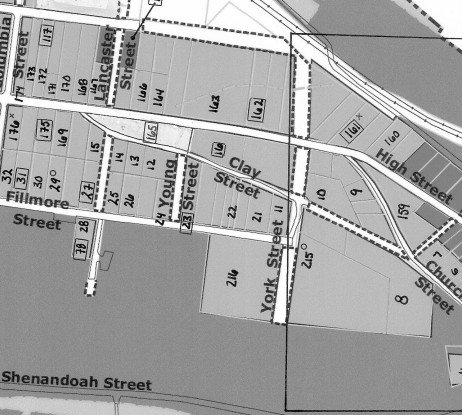
Backstory and Context
Text-to-speech Audio
----Clay Street----
11. 300 Clay Street
Log I-house. Wood siding over log, metal roof, stucco over brick foundation. Two story house has three front bays. End gable metal roof engages an exterior chimney. Windows feature 2/2, 1/1 double hung sash, one fixed pane window, and a two light casement window. Front porch extends over an exposed basement giving a gallery effect. Square column porch supports are joined by a wooden railing. Smaller windows on the second floor are evidence of log construction. House is associated with early settlement in Harpers Ferry. Circa 1820. One contributing building.
12. 371 Clay Street
Gable front and wing house. Two story house has stucco siding, metal roof, and a stone foundation. Front gable roof abuts two chimneys. Windows are 6/6 and 1/1 double hung sash. Front porch is supported by square columns and pilasters. Metal railing traces the rise of the side porch steps. Enclosed basement bays are shuttered. Right side extension is a later addition. Former armory dwelling No. 144. Circa 1837. One contributing building.
13. 381 Clay Street
Log I-house. Stucco over log, metal roof, stucco over foundation. Two stories, three bays. Low gable metal roof, 2/2 double hung windows with large decorative shutters. Plain rough hewn porch supports, millwork railing on the porch, sheltered by a shed roof. Raised porch has lattice skirting. House was owned and occupied by General George Wearing, armory machinist in 1859. It was listed as a “new house” built after the government sold armory houses. It served as a hospital during the Civil War. Circa 1855. One contributing building.
14. 391 Clay Street
Federal I-house. Asphalt shingle and stucco exterior, metal roof, concrete over rubblestone foundation. A brick chimney anchors the right face. Two and a half stories with three front bays. End gable metal roof has snow birds. Windows are 6/6 and 1/1 double hung sash. A raised porch shelters the face of an exposed basement. Decorative wooden millwork supporting the porch roof engages the spindle railing. Modern brick stairs added on the left. In 1859, the building was described as a two story stone house occupied by Marine K. Kreps, an armorer. Circa 1820. One contributing building.
15. 401 Clay Street
Gable front and wing house. Wood siding, asphalt shingle roof, brick and rubblestone foundation. Two and a half stories, three front bays. Chimneys about the rear gable end and the side gable. A Palladian window surrounded by scalloped shingles adorns the wing’s center unwalled dormer. 1/1 double hung sash windows are flanked by decorative shutters. Diamond shaped window accents the front gable peak. Four round wooden columns linked by jigsaw railing support the full-width front porch. Metal railing on the front center steps trace the rise to the porch. Bold Italianate window trim and lintels. Circa 1880. One contributing building.
----York Street----
215. 395 York Street
Cemetery House/Steadman House. This I-house features a stucco exterior, metal roof, and rubblestone foundation. Two and a half stories, three front bays. Steeply pitched end gable metal roof incorporates an unwalled center front dormer, two gable end interior chimneys and snowbirds. Ranked bays have 2/2 double hung sash windows. A pointed arch Gothic window accents the gable peak. First floor windows have flower boxes. A transom tops the front entry. Front porch has a metal railing and turned wood posts. Wide eave overhang wide cornice board at the roof/wall junction. Wide trim traces the roof rake. One mid twentieth century block shed with low pitched gable roof. 1897, Circa 1950. Two contributing buildings.
216. York Street
Harper Cemetery. Steep lot on the heights, six acre tract provided the town in Robert Harpers’s Will. Constructed by the U.S. Army in 1803, the cemetery remains active, well maintained and easily accessible. Hundreds of burials. Circa 1803. One contributing site.
Description from 1979 National Register Nomination: Harper’s Graveyard, Camp Hill: “Robert Harper, in his will of 1782, directed that his heirs should set aside four acres of his land for use as a graveyard by the town of Harpers Ferry. This his heirs failed to do, and the U. S. Government said out the existing cemetery of four acres in 1803 to prevent any contesting of title to the remaining 114 acres purchased from the Wager family in 1796. The government enclosed the graveyard with a stone fence in 1825. The stone wall still stands and the cemetery is in use today.”
Sources
“National Register of Historic Places Inventory—Nomination Form: Harpers Ferry Historic District.” Accessed May 19, 2022. https://wvculture.org/wp-content/uploads/2021/03/Harpers-ferry-historic-district.pdf.
“Harpers Ferry Historic District (additional information).” National Register of Historic Places Continuation Sheet. Accessed May 6, 2022. https://wvculture.org/wp-content/uploads/2021/03/Harpers-ferry-historic-district-additional-info.pdf
GoogleMaps. Accessed May 6, 2022.
GoogleMaps. Accessed May 6, 2022.
GoogleMaps. Accessed May 6, 2022.
GoogleMaps. Accessed May 6, 2022.
GoogleMaps. Accessed May 6, 2022.
GoogleMaps. Accessed May 19, 2022.
GoogleMaps. Accessed May 19, 2022.
“National Register of Historic Places Inventory—Nomination Form: Harpers Ferry Historic District.” Accessed May 19, 2022. https://wvculture.org/wp-content/uploads/2021/03/Harpers-ferry-historic-district.pdf.
“Harpers Ferry Historic District (additional information).” National Register of Historic Places Continuation Sheet. Accessed May 6, 2022. https://wvculture.org/wp-content/uploads/2021/03/Harpers-ferry-historic-district-additional-info.pdf
